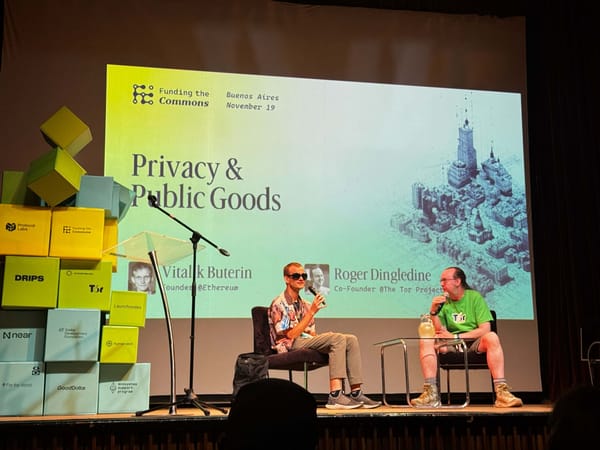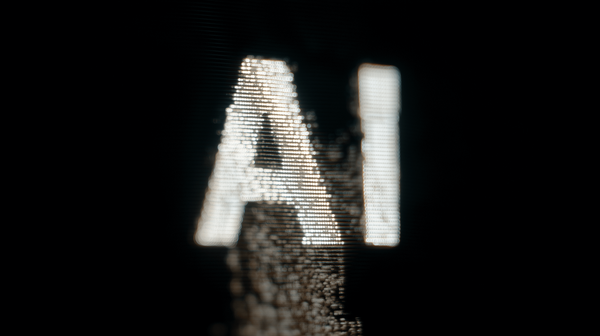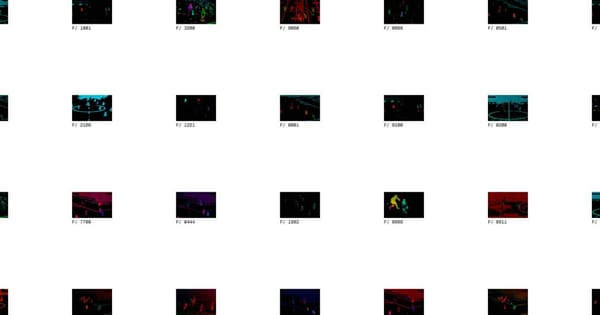The Evolutionary Arms Race Against Deepfakes
Deepfake fraud has hit nearly $900M in 2025, with AI tools like Sora 2 fueling the chaos. BitMind's GAS fights back using decentralized AI that evolves through open competition. Achieving 98% accuracy on some models, it's a scalable solution to restore trust in digital media.

In January 2024, a finance worker at British engineering giant Arup joined what seemed like a routine video call with the company's CFO and several colleagues. They needed to authorize a series of urgent transactions. The voices were right. The faces matched. Everything looked legitimate.
Over the next few days, the worker transferred $25 million across 15 separate transactions.
Every person on that video call was a deepfake.
Arup, the engineering firm behind the Sydney Opera House and Beijing's Bird's Nest stadium, confirmed the scam in May 2024. The finance worker had initially been suspicious when he received what looked like a phishing email requesting a "secret transaction." But those doubts evaporated on the video call. The people looked right. They sounded right. They moved like his actual colleagues.
In 2025 alone, deepfake fraud has already cost nearly $900 million globally. That's not counting the election interference, the revenge porn, the celebrity scams, or the wholesale erosion of trust in digital evidence. In just the first half of 2025, losses hit $410 million, more than all of 2024 combined. The trajectory is exponential.
The fraud breaks down into four main categories. Fake celebrity endorsements for fraudulent investments account for $401 million in losses. Impersonating company officials to authorize transfers, like the Arup case, has cost $217 million. Bypassing biometric verification systems to take out fraudulent loans has resulted in $139 million in losses. Romance scams using AI-generated personas have stolen $128 million.
We're watching the epistemological foundation of "seeing is believing" collapse in real time, and most of the proposed solutions are either security theater or arrived five years too late.
What if the only thing that can kill a deepfake is a better deepfake?
This week OpenAI launched Sora 2, a TikTok-style app where every second of video and audio is AI-generated. Users upload a short video of their face, and Sora inserts them into whatever scenario they imagine. Want to see yourself as a Nazi general? Done. Want to recreate copyrighted TV shows shot-for-shot? Easy. Want to make fake police body-cam footage? The app will generate it with convincing soundscapes and synchronized dialogue.
Sam Altman acknowledged the obvious in his blog post announcing the product: "It is easy to imagine the degenerate case of AI video generation that ends up with us all being sucked into an RL-optimized slop feed." The team, he assured us, "has put great care and thought into trying to figure out how to make a delightful product that doesn't fall into that trap."
Within 24 hours, users had found ways around the guardrails. The Washington Post tested Sora and found it could generate fake videos of real people dressed as Nazi generals, convincing recreations of South Park episodes, and phony historical footage of JFK. YouTuber iJustine made her face available to anyone on the platform and was immediately inserted into videos she had to manually delete.
"Even if viewers prefer authenticity, if it becomes hard to discern, then it will barely have an edge," Mathieu Samson, founder of AI filmmaking agency Kickflix, told the Post. He's probably right.
This is the world deepfake detectors are trying to protect us from. A world where Meta launches "Vibes," an AI video feed. Where infinite slop becomes the centerpiece of our social feeds, not a concerning sideshow. Where, as Scott Rosenberg wrote for Axios, "verification vanishes, unreality dominates, everything blurs into everything else and nothing carries any informational or emotional weight."
For a brief moment in history, video was evidence of reality. Now it's a tool for unreality. And the institutions that should be building immune systems against this are busy optimizing their engagement metrics.
In evolutionary biology, there's this beautiful nightmare called an arms race. A prey species evolves better camouflage. The predator evolves sharper vision. The prey gets faster. The predator gets faster. Neither side ever wins permanently. They just keep getting better at their respective jobs, locked in a co-evolutionary dance that produces increasingly sophisticated adaptations on both sides.
That's essentially what Generative Adversarial Networks do, except compressed into computational loops that run thousands of times per second instead of over millions of years. GANs pit two neural networks against each other in what game theorists call a minimax game. The Generator is the mimic, creating increasingly convincing fakes. The Discriminator is the predator, getting progressively better at spotting them. It's mimicry and detection compressed into pure adversarial mathematics.
Ian Goodfellow, who invented GANs back in 2014, explained it to Lex Fridman using the perfect metaphor: The Generator is a counterfeiter trying to create fake money. The Discriminator is the detective trying to catch them. Each makes the other better through their adversarial relationship. The training loop is a digital cold war where both sides get smarter by trying to out-lie each other.
Here's the irony that keeps me up at night: we built GANs to create art, to generate photorealistic faces, to push the boundaries of what machines could imagine. We didn't realize we were creating the perfect weapon for deception.
BitMind recently launched something they call "GAS", Generative Adversarial Subnet, and it represents a fundamental inversion of that dynamic. They've taken the same GAN architecture and turned it against itself. Instead of training generators to fool humans, they're training discriminators to spot synthetic media in an open, decentralized, continuously evolving arms race.
BitMind's GAS is not like any other startup that promises the world. It runs on Bittensor, which means it's a live, permissionless ecosystem where anyone can participate. The models are open-weight and auditable. The competition happens in public. The incentives are transparent and blockchain-verified.
Think of Bittensor subnets as open, competitive AI micro-economies, all running on the same decentralized backbone. BitMind is one of these subnets, specifically designed to create an immune response against synthetic media. Unlike Meta's internal detection tools or whatever Google is cooking up behind closed doors, this system evolves in public view, constantly tested by real adversarial pressure.
The subnet has three types of participants. Discriminative Miners submit AI models that analyze media to detect fakes. They earn rewards based purely on accuracy, not hardware speed or who registered first. You don't need a data center to compete. You need good ideas and strong models.
Generative Miners, who create AI images and videos designed to fool the detectors. If their output is convincing enough and passes quality checks, they earn rewards. This creates the adversarial pressure that makes the whole system work. Every time a Generator succeeds in fooling Discriminators, it identifies a weakness that needs to be fixed.
Validators act as referees, issuing challenges, scoring submissions, and ensuring fairness. They mix generated fakes with real-world samples to keep evaluations rigorous.
No VC intro is needed. Just GPUs and the willingness to compete. You can start testing BitMind's capabilities right now through their AI or Not app, which works on TikTok, Instagram, X, and anywhere else you encounter suspicious media. They also offer a browser extension that flags potentially synthetic content as you browse.
Academic deepfake detection has a fatal flaw: it's optimized for publishing papers, not stopping actual fraud. Researchers train models on narrow datasets, almost exclusively focused on facial manipulation, then publish when they hit some benchmark accuracy. Those models get deployed exactly nowhere useful because they can't generalize beyond their training distribution.
Commercial detection systems have the opposite problem. They're developed by centralized companies behind closed doors. Black boxes you're supposed to trust because, well, the company said so. You have no idea how they work, whether they're actually effective, or if they're just sophisticated pattern matching that will fail the moment a new generative model drops.
BitMind's whitepaper is refreshingly honest about their performance. On incentivized models like SDXL and RealVis, they're hitting 98% accuracy. On real images from Google and ImageNet, they're maintaining over 90%. Those are strong numbers.
But on out-of-distribution data like MidJourney? 42% accuracy. DiffusionDB? Basically random guessing at 50%. They're not hiding this. They're explicitly saying "our system works on what it's incentivized to detect, and we need to expand that incentivization to more models."
That honesty matters. BBC's research team ran into similar issues with their deepfake detection system. Their white paper on uncertainty quantification shows that even state-of-the-art detectors struggle with edge cases and out-of-distribution samples. They addressed this by incorporating Bayesian uncertainty measures, essentially teaching their model to say "I don't know" when it's not confident.
That's the right approach. We don't need AI that's always confident. We need AI that knows when it's uncertain and flags those cases for human review.
The architecture BitMind built solves a problem that's plagued every previous detection attempt: scaling. Traditional detection services hit throughput limits fast. You need expensive GPU infrastructure, you're running inference on every query, and you can't scale horizontally without massive costs.
BitMind's previous subnet had miners running detection inference directly, which meant they were burning computational resources on every organic request. The new GAS architecture flips this completely. Miners submit models, not inference results. BitMind runs those models on their own infrastructure where they can guarantee service level agreements and privacy protections.
This matters enormously for enterprise adoption. No company wants to send sensitive media to some random miner's server for analysis. With this architecture, the models themselves are the commodity being traded, not access to your data. BitMind can process detection requests on secure infrastructure while still benefiting from the decentralized innovation happening across the subnet.
It also enables near-infinite scaling. When you're collecting models rather than running distributed inference, you can horizontally scale your actual detection infrastructure without being limited by miner capabilities. Aggregate the best models from across the network, deploy them on reliable hardware, and suddenly you can handle massive volumes.
The subnet generates its own training data through a sophisticated pipeline. Validators run image captioning models, feed those captions to language models for enrichment, then generate synthetic content using 15 different state-of-the-art generators. Everything from Stable Diffusion variants to video models like Hunyuan Video and Mochi-1. The synthetic data gets mixed with real images from datasets like Open Images, CelebA-HQ, and MS-COCO.
Every challenge sent to miners includes randomized augmentations at different difficulty levels. Basic geometric transformations. Color adjustments and compression artifacts. Heavy noise and blur. This forces miners to build robust models that work on degraded, real-world content, not just pristine lab datasets.
The technical implementation includes Monte Carlo dropout for epistemic uncertainty and heteroscedastic aleatoric uncertainty for data noise. In plain English: the system can tell you not just "this is fake" but "this is fake and I'm 95% confident" versus "this might be fake but I'm really not sure, you should verify manually."
That uncertainty quantification is critical. The worst possible outcome is a detection system that's confidently wrong. Better to have one that admits uncertainty and flags edge cases for human review.
Now let's address what you're probably thinking: isn't this just recreating centralization with extra steps?
Kind of, but not in the ways that actually matter.
Yes, BitMind controls the subnet design and the incentive mechanism. Yes, they run the enterprise API layer. Yes, they decide which generative models to incentivize. That's centralized control over the rules of the game.
But the actual innovation happens in a permissionless competition among miners. Anyone can participate. All the code is open source. The evaluation metrics are transparent and blockchain-auditable. If BitMind starts making bad decisions, miners can fork the subnet.
Compare that to OpenAI. Or Google. Or any other company building detection tools. They're black boxes controlled by executives optimizing for quarterly earnings. You have zero visibility into their methods, zero ability to compete with their approach, and zero recourse if they're wrong.
Decentralization isn't about eliminating all hierarchy. It's about making power accountable and creating genuine competition at the layers that matter for innovation.
The risks are real. Gaming the incentives is inevitable. Anytime you create a financial reward mechanism, people will find ways to exploit it. BitMind's whitepaper discusses some protections, like augmentation strategies that make reverse-engineering difficult, but determined adversaries always find cracks.
The closed-source generator problem is massive. The biggest generative models are locked behind proprietary APIs or aren't accessible at all. If BitMind can't incentivize detection of these models because they can't generate training data from them, the subnet develops a blind spot that bad actors will absolutely exploit.
Regulatory uncertainty looms. Blockchain-based systems operating across jurisdictions while processing media detection at scale will attract regulatory attention. Especially when money is involved. Especially when that detection might be used for content moderation, law enforcement, or journalism.
But here's why this matters anyway: we need a systems-level response to a systems-level problem.
Deepfakes aren't going away. The generative models creating them are improving exponentially faster than traditional detection methods can keep pace. Every time a new model drops, detection methods trained on previous generators become partially obsolete. The only way to keep up is continuous adaptation.
That requires an ecosystem, not a product. It requires distributed innovation, transparent evaluation, and aligned incentives for rapid iteration. It requires the competitive dynamics of an evolutionary arms race.
BitMind isn't the first to recognize this. The Netflix Prize proved that open competition with financial incentives could drive innovation faster than traditional corporate R&D. Meta's Deepfake Detection Challenge showed the same thing specifically for synthetic media, awarding $1 million to the top five models. But those were one-time competitions. GAS is attempting to create a permanent, self-evolving system.
The architecture also matters beyond deepfakes. If this approach works, it's a template for other AI safety challenges. Adversarial testing at scale. Continuous red-teaming through financial incentives. Transparent evaluation of model robustness. These are problems that extend far beyond synthetic media detection.
We're building a world where you can't trust your eyes. Where video evidence is negotiable. Where the entire epistemological foundation of "seeing is believing" has collapsed. That's not hyperbole. That's just 2025.
The technology is already here. The scams are already happening. The financial losses are already in the hundreds of millions. Traditional institutions are failing to adapt. Academic research is too slow and too narrow. Corporate solutions are too closed and too static. Regulation is always playing catch-up.
What's needed is an immune system for digital media. Something that evolves as fast as the threats it's defending against. Something with distributed intelligence and aligned incentives. Something that can't be defeated by attacking a single point of failure.
Mark Zuckerberg won't add BitMind into Instagram. Taylor Swift won't demand her label watermark videos with open verification. The major platforms have no incentive to solve this because uncertainty benefits their engagement metrics.
So we have to do it ourselves.
Get your bank to use decentralized detection. Get your favorite brands and celebrities to do the same. Push for adoption at every level because the institutions that should be protecting us are busy optimizing their quarterly earnings calls.
The best defense against artificial lies isn't more control. It's more chaos. More forks. More fighters. More people running basement GPUs in a permissionless competition to build better detectors faster than the attackers can build better generators.
GAS isn't perfect. It's not even close to perfect. The sustainability questions are real, the technical limitations are significant, and the incentives might collapse.
But it's the only system getting better because it's under attack. It's open-source immune response in a world that desperately needs one. And that counts for something.








